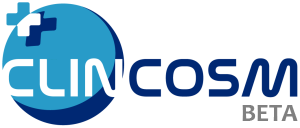EyekonT1D: Eye-tracking-based Artificial Intelligence Detects Abnormalities of the Oculomotor System in Type 1 Diabetes
Study Details
Study Description
Brief Summary
Abnormalities of the oculomotor system may represent an early sign of diabetic neuropathy and are currently poorly studied. The investigators designed an eye-tracking-based test to evaluate the oculomotor function in patients with type 1 diabetes.
The investigators used the SRLab -Tobii TX300 Eye tracker®, an eye-tracking device, coupled with a software that we developed to test abnormalities of the oculomotor system. The software consists in a series of screens divided in 5 classes of parameters (Resistance, Wideness, Pursuit, Velocity and Optokinetic Nystagmus [OKN]) to evaluate both smooth and saccadic movement in different directions. 40 healthy volunteers and 40 patients with long-standing type 1 diabetes will be enrolled to analyze the alterations in the oculomotor system and function.
| Condition or Disease | Intervention/Treatment | Phase |
|---|---|---|
|
Detailed Description
The study will enroll 40 healthy volunteers and 40 patients with long-standing type 1 diabetes. The aim of the study is to analyze alterations in the oculomotor system function as an early sign of diabetic neuropathy. A novel eye-tracking-based test will be employed and 5 parameters will be analyzed through the use of a computer-based test which will record timeframes of eye movements towards an object, type of eye movements, time between the first eye movement, number of visualization required to recognize the object across the screen. Each of these parameter will be employed to assess whether Resistance, Wideness, Pursuit, Velocity of eye movements and movements related to the Optokinetic Nystagmus are altered in type 1 diabetes as compared to non diabetic subjects.
Study Design
Arms and Interventions
| Arm | Intervention/Treatment |
|---|---|
| Long-standing T1D patients Patients with long-standing type 1 diabetes |
Diagnostic Test: Eye-tracking video test
An eye-tracking-based test will be administered to patients. It lasts 10 minutes. It consists in several screens passing by to identify objects at a certain time by a mouse clic or touchpad.
|
| Healthy volunteers Healthy volunteers |
Diagnostic Test: Eye-tracking video test
An eye-tracking-based test will be administered to patients. It lasts 10 minutes. It consists in several screens passing by to identify objects at a certain time by a mouse clic or touchpad.
|
Outcome Measures
Primary Outcome Measures
- Percentage of patients with a change in eye movement test in each class Resistance, Velocity, Pursuit, Wideness and OKN measured by the eye-tracking based test [End of the study (when all patients have completed all sessions of the test), an average of 6 months]
Percentage of all parameters tested in each class changed in patients with type 1 diabetes as compared to healthy subjects. Parameters evaluated include number of visualization required to recognize a target and time (seconds), to recognize a target moving on the screen in different directions.
Secondary Outcome Measures
- Percentage of patients with a change in eye movement test in the Resistance class [End of the study (when all patients have completed all sessions of the test), an average of 6 months]
Percentage of parameters tested in the Resistance class changed in patients with type 1 diabetes as compared to healthy subjects. Resistance will be measured by using number of visualization required to recognize a target and time (seconds) required to recognize a target moving on the screen in different directions. An algorithm will attribute those measurements to the specific class of Resistance.
- Percentage of patients with a change in eye movement test in the Wideness class [End of the study (when all patients have completed all sessions of the test), an average of 6 months]
Percentage of parameters tested in the Wideness class changed in patients with type 1 diabetes as compared to healthy subjects. Wideness will be measured by using number of visualization required to recognize a target and time (seconds) required to recognize a target moving on the screen in different directions. An algorithm will attribute those measurements to the specific class of Wideness.
- Percentage of patients with a change in eye movement test in the Velocity class [End of the study (when all patients have completed all sessions of the test), an average of 6 months]
Percentage of parameters tested in the Velocity class changed in patients with type 1 diabetes as compared to healthy subjects. Velocity will be measured by using number of visualization required to recognize a target and time (seconds) required to recognize a target moving on the screen in different directions. An algorithm will attribute those measurements to the specific class of Velocity.
Eligibility Criteria
Criteria
Patients:
Inclusion Criteria:
-
Type 1 diabetes
-
willing to give consent
Exclusion Criteria:
-
Diabetic retinopathy and other ocular diseases
-
other endocrine disease
-
malignancy
Healthy volunteers:
Inclusion Criteria:
- willing to give consent
Exclusion Criteria:
-
Other ocular diseases
-
Any endocrine disease
-
Malignancy
Contacts and Locations
Locations
| Site | City | State | Country | Postal Code | |
|---|---|---|---|---|---|
| 1 | Sacco University Hospital | Milan | MI | Italy | 20157 |
Sponsors and Collaborators
- University of Milan
- ASST Fatebenefratelli Sacco
Investigators
None specified.Study Documents (Full-Text)
None provided.More Information
Publications
None provided.- EyekonT1D
